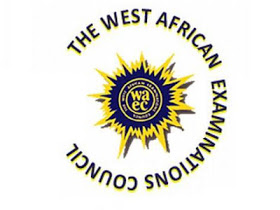¶¶ NECO GCE 2017 Biology Obj And Essay Answer – Nov/Dec Expo
WELCOME TO AYOSTUFFS GCE BIOLOGY PORTAL
+++++++++++++++++++++++++++++++++++
REFRESH THIS PAGE EVERY 5MIN
++++++++++++++++++++++++++++++++
Bio-Obj
1CBABEECCBA
11DBABDBBDDE
21BEEDEDACAB
31BAAADBBBEA
41EABDCDAAED
51ABDBACCDBB
Biology theory
(1ai)
Sexual reproduction:This is a type of reproduction which involves the fussion of male gametes(eg sperm cell) and the female gametes(eg egg cell) to form zygote which later develops to a young offspring
(1aii)
-Abstinence
-Birth Control Sponge (Today Sponge)
-Birth Control Vaginal Ring (NuvaRing)
-Birth Control Shot (Depo-Provera)
-Birth Control Implant (Implanon and Nexplanon)
(1aiii)
-Mutualism represents a symbiotic relationship where both species involved benefit from the relationship while commensalism represents a symbiotic relationship where only one organism benefits while the other does not benefit from the relationship
-Good examples for mutualism include the relationship between bees and flowers as well as humans and digestive bacteria while Examples for commensalism include hermit crabs using dead gastropods for shelter or millipedes travelling on birds
(1b)
(i)Hooks and suckers allow it to hold on tightly to the wall of the intestine
(ii)Its flat body gives it a large surface area to absorb food
(iii)It has no need of a mouth or gut as it absorbs already digested food
(1ci)
DRAW THE DIAGRAM
(1cii)
-Evidences from Palaeontology
............................................................
(2ai)
(i) Acidification: This is a method of adding acid to a loe acid food. Acid can be used in food to slow down or prevent the growth of disease or spoilage causing organisms
(ii) Drying of Food: Food drying is a method of food preservation in which food is dried (dehydrated or desiccated). Drying inhibits the growth of bacteria, yeasts, and mold through the removal of water.
(iii) Home Canning: Home canning is a way to preserve fresh foods in glass jars and then heating the jars to kill the organisms that would create spoilage
(iv) Freezing Food: This is a method of preserving food by lowering the temperature to inhibit microorganism growth.
(2aii)
(i) Vector is an organism that does not cause disease itself but which spreads infection by conveying pathogens from one host to another. Species of mosquito, for example, serve as vectors for the deadly disease Malaria
(ii) Refuse can be defined as All nonhazardous solid waste from a community that requires collection and transport to a processing or disposal site
(iii) Sewage is a type of wastewater that is produced from a community of people. It is characterized by volume or rate of flow, physical condition, chemical and toxic constituents, and its bacteriologic status
(2b)
(i) Mineral salts from soil
(ii) Products of photosynthesis from leaves
(2c)
DRAW THE DIAGRAM
.....................................................................
NO5a i
Respiration is the exchange of oxygen and carbon dioxide between the toad and its environment. Oxygen is taken into the body and carbon dioxide is given off. Every cell of the body consumes oxygen. With the help of oxygen, the assimilated food which is stored within the cells is slowly oxidised.
The result is the liberation of heat energy, and formation of carbon dioxide and water. Thus when glucose is oxidised, one molecule of glucose combines with six molecules of oxygen to form six molecules of carbon dioxide and six molecules of water.
.
NO5a ii
(1) consideration of the oxygen isotopic records of low latitude temperature variations;
(2) discussion of the physical arguments for temperature stability within the tropics;
(3) examination of climate model-derived tropical temperatures;
(4) examination of model evidence for tropical salinity differences between different time periods in Earth history
5bi
i. Natality (birth rate):This refers to the rate of given birth to new organisms. This generally (be it plants or animals) leads to increase in population.
ii. Mortality (death rate):This refers to the rates at which organisms die in a habitat. Mortality generally leads to a decrease in population.
iii. Immigration (dispersal):This is the movement of organisms from different habitats into a new habitat. This tends to increase the population of this new area.
Iv. Emigration: This is the movement of organisms out of a habitat due to either scarcity of food or unfavourable conditions or for breeding purposes. This, however, reduces the population of a habitat.
V. Availability of food: The availability of food in a given habitat tends to increase the population of that habitat through rapid rate of reproduction and other organisms coming into feed.
NO5bii
i. homozygousis when a cell has two identical copies of a gene. An example ofhomozygousis a cell
ii. heterozygote -is an individual having two different alleles of a particular gene or genes, and so giving rise to varying offspring
iii. parasite- an organism that lives in or on an organism of another species (its host) and benefits by deriving
KEEP REFRESHING..................
============================
ANSWERS LOADING...... STAY ONLINE
INVITE YOUR FRIENDS TO OUR WEBSITE




Comments
Post a Comment